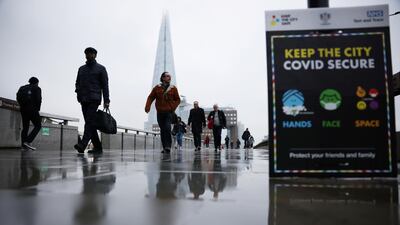New British government figures show how coronavirus has widened the gender gap between men and women in the professional and domestic spheres.
Since the start of the pandemic, women have shouldered a heavier burden of housekeeping and childcare duties. Women were also more likely to be furloughed.
However, more men have died from the virus, making up nearly 57 per cent of Covid-19 fatalities, according to data from the Office for National Statistics.
These four graphs show how the Covid-19 pandemic has affected men and women in different ways.
Men more likely to die
In the early stages of the pandemic, 30 per cent more men died from coronavirus than women, before the mortality gap narrowed later in 2020.
Overall, there has been almost an 18 per cent difference between the total number of Covid-related deaths for men (63,700) and women (53,300), ONS figures show.
Currently it is estimated there have been 31 deaths for every 100,000 men compared with 17 deaths for every 100,000 women.
Women more likely to be furloughed
The statistics make it clear the pandemic has had a more profound impact on women’s professional lives.
Female workers were consistently more likely to be put on furlough last year, between June 1 and December 31. Some analysts said this was due to women being more likely to hold part-time jobs and administrative roles.
In July, there were 2.9 million women on furlough, compared with 2.7 million men. By October the numbers for men and women on furlough reduced to 1.2 million and 1.1 million, respectively.
The current total for people on furlough – including both genders – is estimated at 1.9 million, following the latest lockdown.
Women spend more time on childcare
In October, women spent one hour and 45 minutes a day on unpaid childcare and housework, nearly double the figure for men. During the height of the pandemic that figure was nearly two hours.
During the first lockdown, men were shown to have spent more time looking after children and doing chores, but that trend has reversed to pre-pandemic levels, according to the ONS.
Given their domestic workload it is no surprise that women were more likely to work from home and on average they spent 88 minutes of their day working from home, compared with the average figure for men of 57.6 minutes.
Women's mental health worse affected
Women’s mental health has been more adversely affected by coronavirus than men’s, with women consistently reporting higher levels of anxiety, loneliness and stress.
In June 2020, nearly a quarter (23 per cent) of women said they experienced moderate to severe depression, compared with just 12 per cent the year before.
Figures from January this year also showed 86 per cent of women felt lonely and experienced elevated levels of anxiety.


